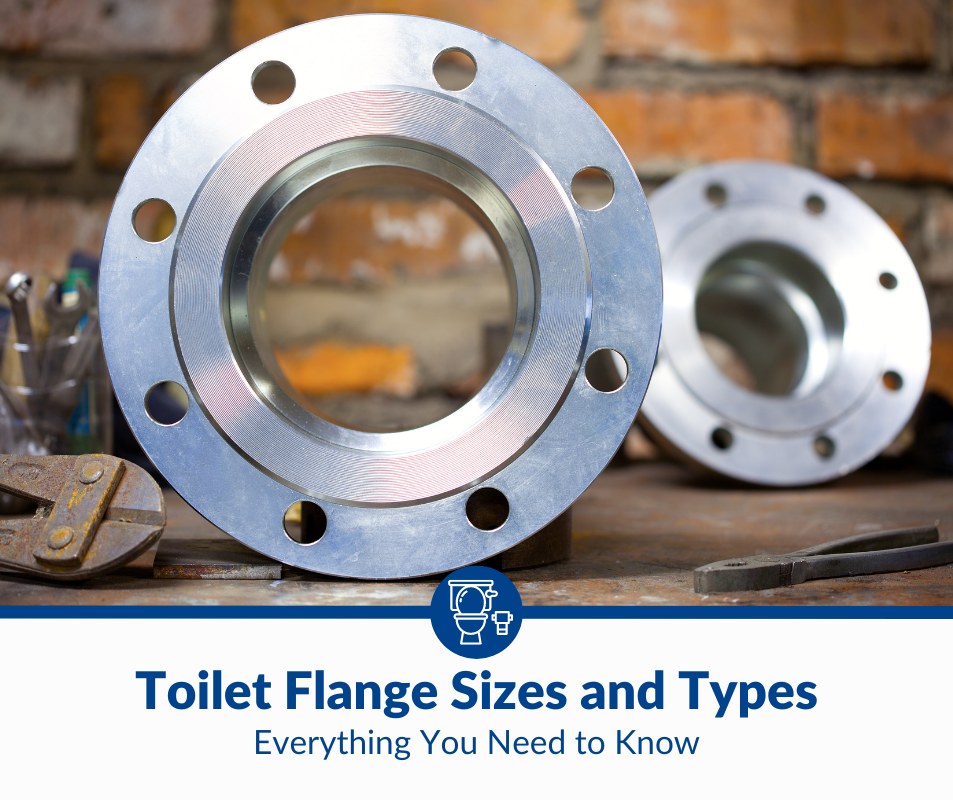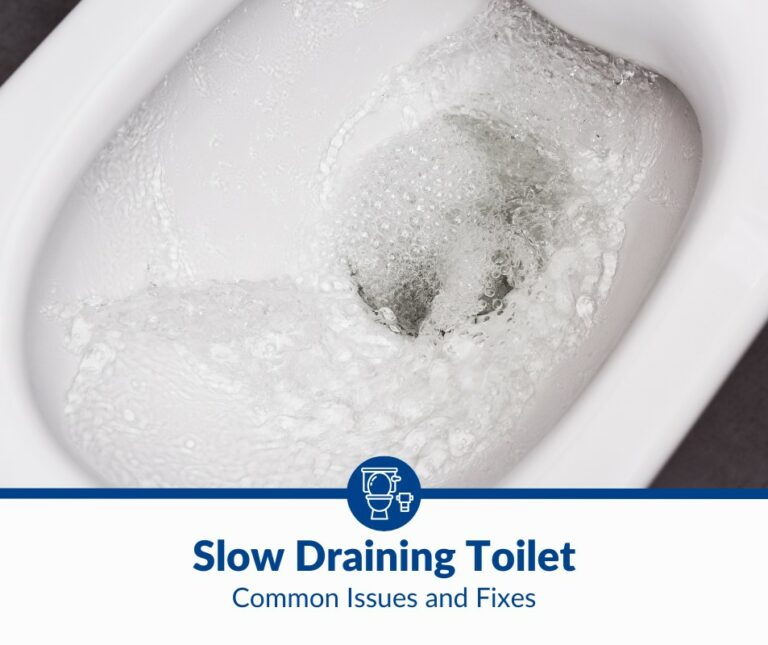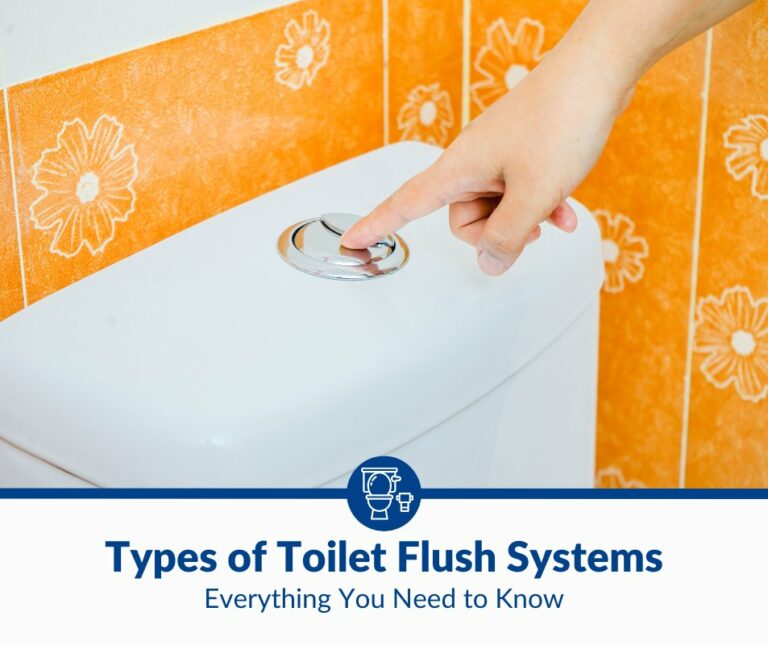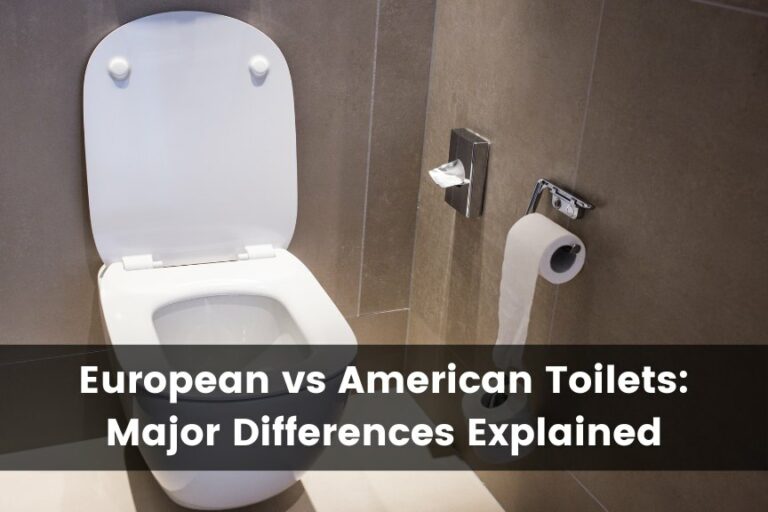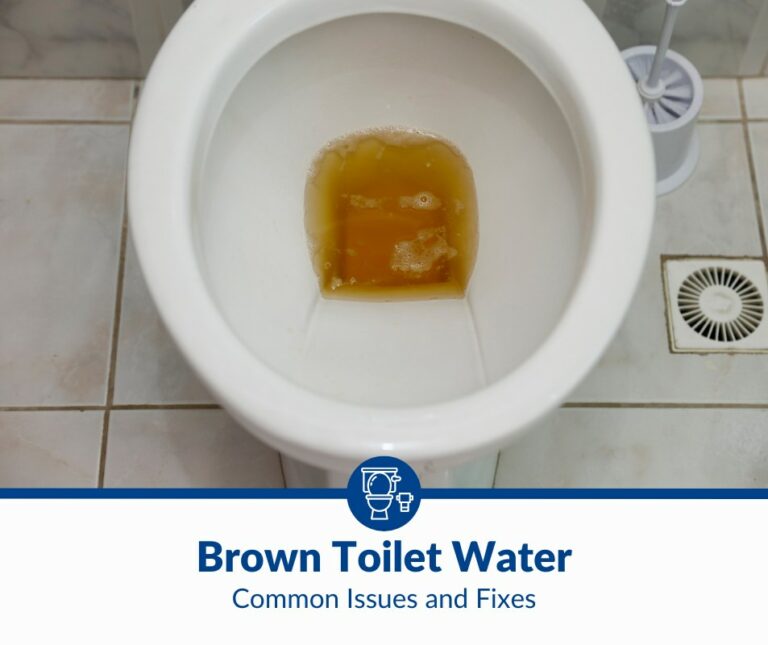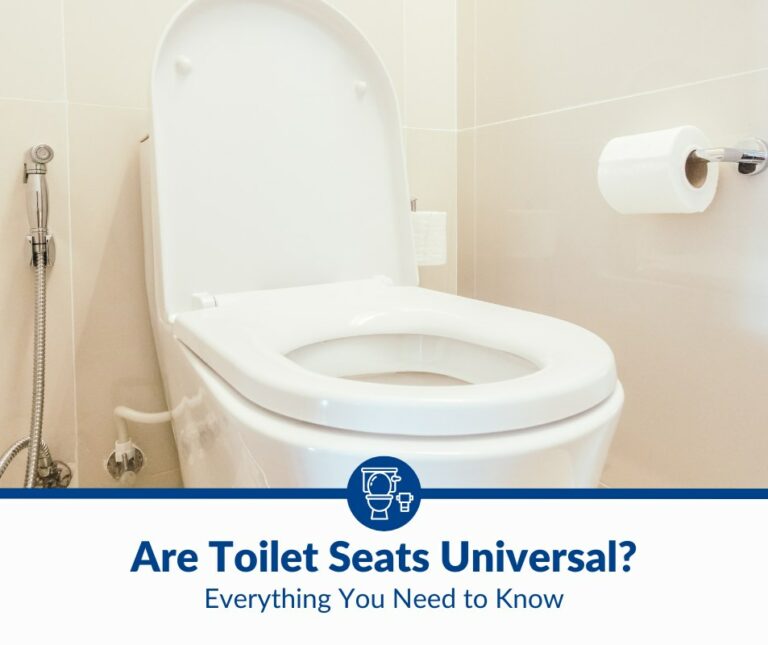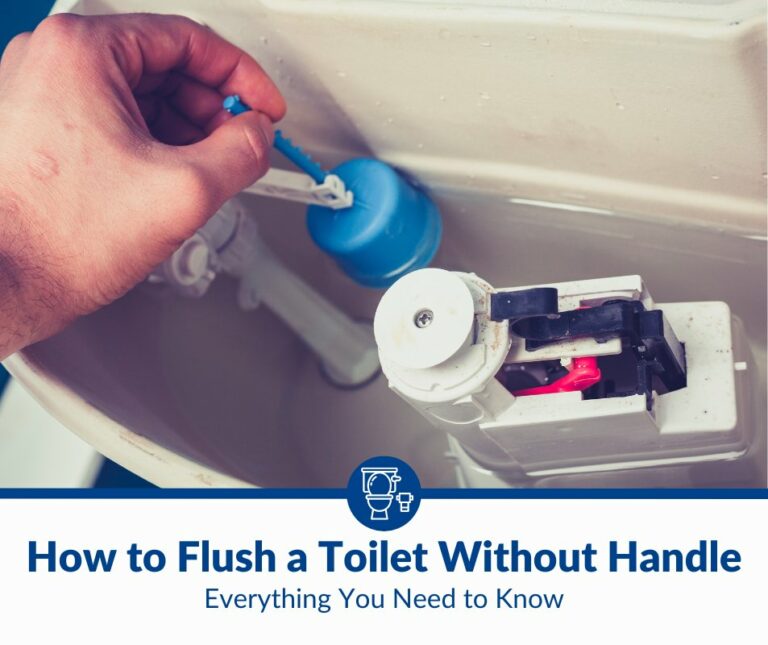Toilet Flange Sizes and Types: The Complete Guide
A toilet flange is a tubular fitting that connects the toilet bowl to the DWV or drain, waste, and vent pipe, while also facilitating a sealed and sturdy installation. All closet or toilet flanges are essential fittings per the code requirements, but they are available in distinct sizes and types.
The common toilet flange sizes are 3 inches (7.62 cm), 4 inches (10.16 cm), and 6 inches (15.24 cm). Flanges are usually made of PVC, ABS, brass, iron, steel, or other approved materials. A standard flange is a cylindrical fitting but offset designs and repair rings are also prevalent.
The size and type of toilet flange you have or need depends on the DWV pipe, its diameter, and material, and the condition of the floor or subfloor in a bathroom, such as finished, in renovation, under construction, etc. Read on to learn everything about toilet flanges in this complete guide.
Understanding Toilet Flange Sizes
The toilet flange size is classified as per the bore diameter or the width of the fitting. This bore width or diameter corresponds to the drain pipe size for your toilet. There are other toilet flange dimensions beyond the fitting’s diameter or size for both standard and offset flanges.
Here are the common sizes and toilet flange dimensions that you will find nowadays:
3-Inch Toilet Flange (7.62 cm)
The most prevalent toilet flange size is a 4×3, which has a diameter of 4 inches (10.16 cm) at the top, and the bottom is 3 inches (7.62 cm). The base of a toilet bowl sits atop the 4 inches or 10.16 cm opening of the toilet flange, and the 3 inches (7.62 cm) bottom fits into the DWV pipe.
The 4 inches or 10.16 cm diameter at the top of a 4×3 flange facilitates a sealed and secured fit for the toilet with a wax ring. The 3 inches or 7.62 cm diameter at the bottom is for a snug fit with the drain pipe. But you will also find a 3×3 toilet flange for standard 3 inches (7.62 cm) pipes.
A 3×3 toilet flange doesn’t offer any extra space at the top where the toilet is mounted, so there may be a bit more pressure on the wax ring whenever you flush. This factor is the main reason for the popularity and prevalence of the 4×3 toilet flange size.
4-Inch Toilet Flange (10.16 cm)
Most toilet drain pipes are 3 inches (7.62 cm), but some houses have 4 inches (10.16 cm) DWV piping. Such wider pipes require a toilet flange with a bottom diameter of 4 inches (10.16 cm). A 4×3 toilet flange may or may not fit a 4 inches (10.16 cm) DWV pipe.
Consider the examples of the following types of toilet flanges manufactured by Oatey:
- The Oatey Level Fit Closet Flange is for 3 inches (7.62 cm) pipes, but it can also be installed inside a 4 inches (10.16 cm) pipe. These toilet flanges with a plastic ring are for PVC and ABS pipes.
- The Oatey Easy Tap Closet Flange fits over 3 inches (7.62 cm) and inside 4 inches (10.16 cm) PVC and ABS pipes. These toilet flanges have a test cap and an adjustable metal, plastic, or stainless steel ring.
In contrast, you have to use 3 inches (7.62 cm) or 4 inches (10.16 cm) cast iron Oatey toilet flange if the drain pipe is of the same material. The Oatey Cast Iron Closet Flange fits outside a drain pipe of the corresponding size (3” or 4”), so you can’t toggle an inside or over installation.
6-Inch Toilet Flange (15.24 cm)
A 6-inch (15.24 cm) toilet flange is uncommon. However, if your toilet has one in this size, you may need to use an extension to ensure it attaches correctly. You can buy a toilet flange extension kit from most DIY stores, and they will ensure that you have a watertight connection.
Toilet Flange Dimensions
Drain, waste, and vent pipes aren’t always 3 inches (7.62 cm) or 4 inches (10.16 cm). If a pipe is 3.5 inches (8.89 cm) wide, you must select the toilet flange diameter accordingly. However, odd sizes of drain pipes aren’t common in household toilets.
Nonetheless, the pipe size and closet fitting diameter are not the only toilet flange dimensions. The toilet flange diameter, whether at the bottom or the top, doesn’t apply to a ring or other features and parts of the fitting that may be larger.
For instance, this Oatey PVC Closet Flange has a free-turning or rotating stainless steel ring larger than the bore or diameter. The larger stainless steel ring is the mounting fixture that you use for the bolts and to secure the toilet bowl.
Also, these Oatey toilet flanges have a cap you can easily tap with a hammer to knock it out after installation. The cap keeps sewer gasses down until it is broken. A toilet flange may have a hub apart from the mounting holes, whether a bracket or ring, which are integral to such fittings.
Hence, the toilet flange diameter is more about fitting the size of the DWV pipe. The mounting holes in a fixed bracket, any adjustable swivel ring, and other features are beyond the toilet flange diameters at the bottom and top.
A standard 4×3 toilet flange with an adjustable or swivel ring may have an external diameter of 7 inches (17.78 cm) at the top. The same toilet flange size is likely to have a diameter of 6 inches (15.24 cm) when you measure the mounting holes for the closet bolts from center to center.
These toilet flange measurements may apply to both 3 inches and 4 inches bore diameters for the pipes of respective sizes. Likewise, you can choose a toilet flange size with a suitable barrel depth or shank height.
A standard toilet flange may have the following depths:
- 2.75 inches (~7 cm)
- 3.5 inches (~9 cm)
- 4 inches (10.16 cm)
A deep seal toilet flange has a longer barrel or shank, which is usually 6 inches (15.24 cm) or 7 inches (17.78 cm). These depths don’t alter the standard diameters for typical pipe sizes.
Understanding Toilet Flange Types
Apart from size, toilet flanges are also classified based on their type, which is essentially about design and form. The design and, thus, form usually has a distinct feature to serve a specific purpose. That said, most American homes use the regular or standard flange type.
Toilet flanges come in various bolt patterns, and this determines where you’ll place the bolts securing the toilet to the flange.
Standard Toilet Flanges
The standard flange is the most common type and is a straight, circular fitting with round openings on both ends. These toilet flanges are centered directly on the drain, waste, and vent pipe. The toilet bowl is centered on such standard flanges. These regular flanges have a straightforward installation process.
Some toilet flanges may have an oval fitting at the top, but the bore is still round. The oval fitting is typically for toilets if the base or mounting requisites demand so. A regular flange with a round mounting fitting or ring should be compatible if you have a standard one- or two-piece toilet.
While the standard design is affordable and easy to install, such toilet flanges may not be suitable for all setups. For instance, you may be unable to center a toilet on the closet flange or the waste pipe. You might require an offset flange for such a toilet or bathroom configuration.
Offset Flanges
An offset flange is an angled and extended version of the standard design. The bottom portion of the offset flange remains identical for the chosen diameter or pipe size. The top of an offset toilet flange features an angled, extended pipe fitting to make an off-center installation possible.
These flange types are most suitable if your drain pipe isn’t centered under the toilet.
The angled and extended portion may feature a 45° bend or a curved slope. Both styles serve the same purpose of installing a toilet a little away or off the center of the DWV pipe and the closet flange. That aside, offset toilet flanges have standard diameters and similar rings.
Generally, offset flanges are costlier than the standard versions and a bit more difficult to install, but your bathroom or plumbing configuration and the toilet alignment may make such a specialty design necessary. Consider the following probable issues in some houses:
- A toilet drain pipe may have a floor joist nearby, making installing and screwing in a standard closet flange unviable. An offset toilet flange offers a couple of extra inches in the desired direction to avoid the floor joist while securing the bolts.
- A modern toilet with a 10 inches (25.4 cm) or 12 inches (30.48 cm) rough-in can’t be centered on a drain pipe or toilet flange that is 14 inches (35.56 cm) from the wall. So, an offset toilet flange with its extended and flexible alignment is necessary.
- If a toilet alignment demands an off-center installation or mounting on the closet flange and drain pipe, you must use an offset or specialty design. No standard toilet flange allows off-center installation, regardless of using extenders or spacers.
Your bathroom’s design, clearance, and other configuration issues may require the toilet to have a slightly different alignment. In all such cases, an offset toilet flange with an adjustable ring and sufficient extension for the fitting will likely be the only compatible solution.
PushTite Flanges
PushTite is a patented toilet flange made by Sioux Chief, one of the leading brands of drainage and plumbing products. The PushTite toilet flange is based on the standard design with an extra feature in the form of a gasket at the bottom. This gasket facilitates easy installation or repair.
The Sioux Chief PushTite toilet flange is either PVC or ABS, so it is compatible with drain pipes made of both these materials. Plus, you can use the PushTite with a cast iron DWV pipe. These toilet flanges are available in 3” and 4” sizes. The tailpiece of the PushTite is 4 inches (~10 cm).
All PushTite toilet flanges go into the DWV pipe, and the gasket forms a secure seal, so it is a fitting option if you are repairing or replacing a damaged closet flange. PushTite flanges are also a simpler alternative to standard designs for new toilet installations, except for offset variants.
These types of toilet flanges have a stainless steel ring that swivels for easy adjustment during installation. Also, the gasketed closet flanges don’t have any ledges or obstructions on the inner walls, so there’s no probability of a toilet clogging due to this essential fitting.
Repair Toilet Flanges
A repair toilet flange is typically a ring that you can install on an existing closet and drain pipe. If you have a bit of an old toilet flange corroded, damaged, or unusable, the new ring can fit on top of it. You can clean the existing flange and securely install the ring with a 100% silicone sealant.
A repair flange kit or ring is suitable for most toilet drain pipes; you don’t have to replace the plumbing. However, the solution won’t be as durable or sturdy as new and whole standard and offset toilet flanges, nor will the repair kit or ring address any damage in the old drain pipe.
Toilet Flange Materials
The most common toilet flange materials are the following:
- PVC
- ABS
- Iron
Old houses may have brass toilet pipes with a lead bend. Some properties have steel pipes, but cast iron is still the only non-plastic material that is relatively prevalent. Hence, most toilet flange manufacturers only prioritize PVC, ABS, and cast iron, with steel being a popular ring material.
You should ideally use a PVC toilet flange for a PVC drain pipe. The same norm applies to ABS and cast iron drain pipes and their closet flanges. However, many PVC or ABS toilet flanges are compatible with cast iron drain pipes. But not all cast iron flanges may work with plastic pipes.
PVC is more affordable than ABS, which is why it is more popular. ABS is more durable due to its sturdiness. Both plastics are known for their non-corrosive attribute, which makes them a tad better than cast iron. On the flip side, cast iron toilet pipes have the following advantages:
- Cast iron is stronger and more durable than plastics.
- Cast iron pipes are quieter than both PVC and ABS.
- Cast iron toilet pipes have greater heat resistance.
It is not uncommon for contemporary toilet flanges to use different materials for distinct parts. A plastic toilet flange may use the following materials for different components:
- ABS or PVC flange
- Metal or steel ring
- Solid brass bolts
Toilet Flange Essentials
The toilet flange essentials you need depend on the materials and your configuration. All toilet flanges must be sealed and secured to the drain pipe. A PVC or ABS toilet flange uses solvent weld connections to the DWV pipe. So, you need to have some PVC cement or ABS cement.
A brass toilet flange typically requires soldering. In contrast, cast iron toilet flanges with gaskets don’t require any caulk or sealant. These gaskets can expand if the toilet flange type is intended to fit into a cast iron or heavyweight pipe. Those mounted outside can also have fitting gaskets.
Repair toilet flanges or rings may require a 100% silicone sealant, as do most extenders or spacers. Apart from these, you will need a second set of essentials to install a flange and mount the toilet with a sealed and secured fit. Here are those essentials for most toilet flanges:
Flange T Bolts
Toilet flanges use closet bolts. These closet or T-bolts are usually included in the pack when you buy a toilet flange, irrespective of the material and type. These toilet flange bolts are generally of the following sizes:
- 1/4 inch or 5/16 inch (0.63 cm) diameter
- 2.25 inches (5.7 cm) length (standard)
- 3.5 inches (8.89 cm) length (extra long)
The best toilet flange bolts are made of solid brass, but they are quite expensive. Plastic T-bolts are cheaper, and so is brass-plated steel. However, neither is as reliable as solid brass, which is known for being resistant to corrosion and rust. Also, solid brass bolts have a little give.
Flange Extender
Toilet flanges shouldn’t be flush or under the finished floor. The top part of the bore or pipe may be flush with the finished floor, but the ring should protrude a bit. If a standard flange is fitted to a drain pipe at the subfloor level, the ring to mount the toilet on may be below the finished floor.
Such an installation may not have a watertight seal, and you might encounter leaks. Hence, you need flange spacers to extend the fitting and raise the level at which you will mount a toilet bowl with a wax ring. These toilet flange extenders or spacers are available in the following thickness:
- 1/8 inch (3.17 mm)
- 1/4 inch (6.35 mm)
- 1/2 inch (12.7 mm)
- 3/4 inch (~19 mm)
Toilet Wax Ring
Last but not least, you need a toilet wax ring or a wax-free variant made of rubber. The wax ring ensures that the flange and toilet connection is sealed and secured, so it is necessary for both the bowl and the closet fitting. Toilet wax rings and alternatives come in slightly different sizes.
Additional Resources
If you have to repair a toilet flange with a ring, here’s a helpful guide from Oatey. Replacing a toilet flange requires a different approach. You may check out this guide, or watch the following video:
Toilet flange installation, repair, and replacement are distinct processes, and you should follow the instructions provided by the manufacturer. For instance, installing or replacing the cast iron toilet flange in the above video is different from working with the following Sioux Chief flanges:
Final Thoughts
Although there aren’t many toilet flange sizes and types, you must match the exact diameter to get a fitting that is appropriate for your drain pipe. Also, check if you’ll need a standard or offset flange, the material, and the type of connection, i.e., inside, on, outside, gasket, glue, weld, etc.

